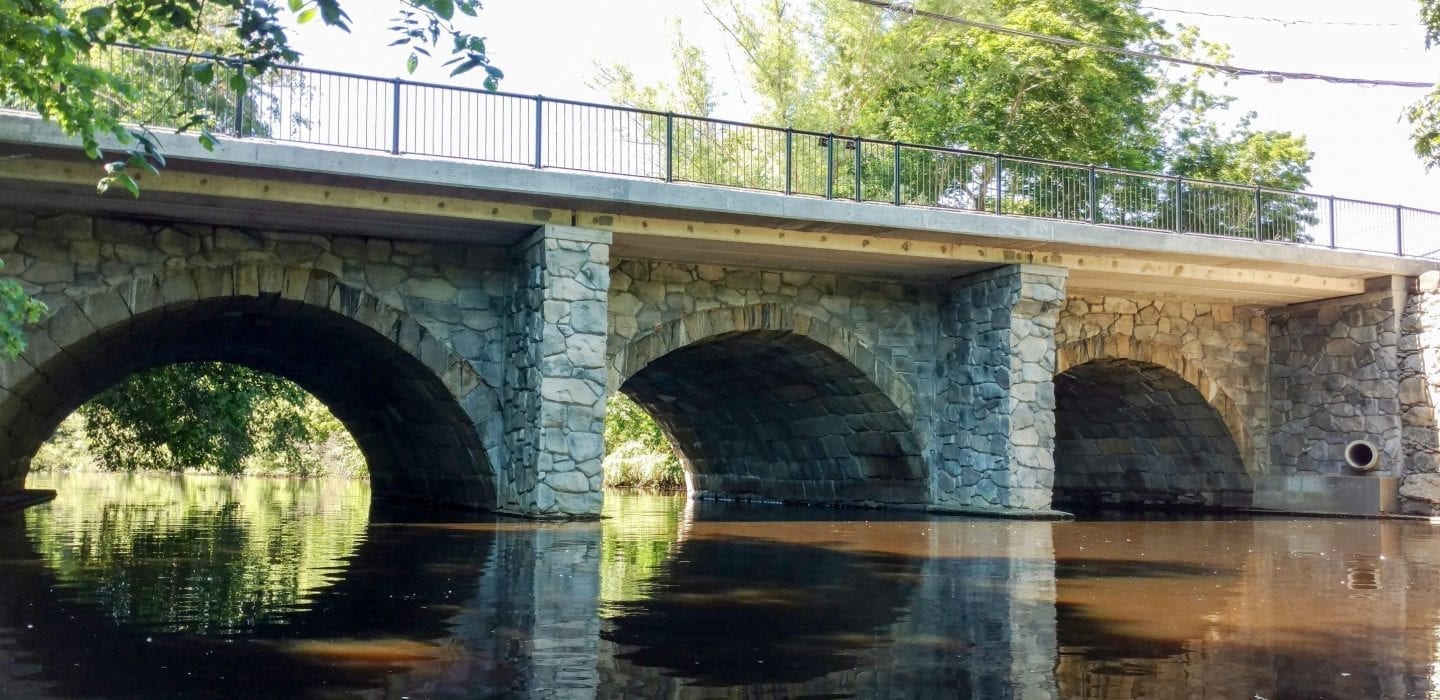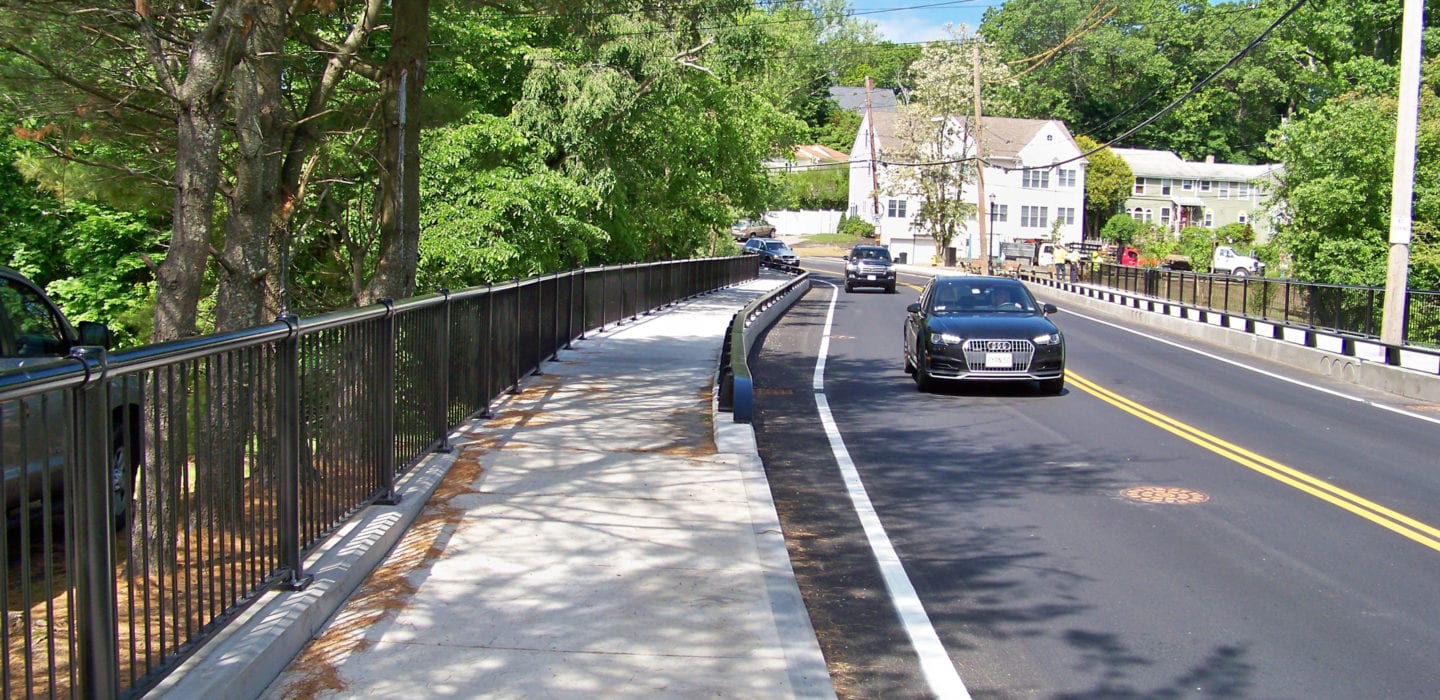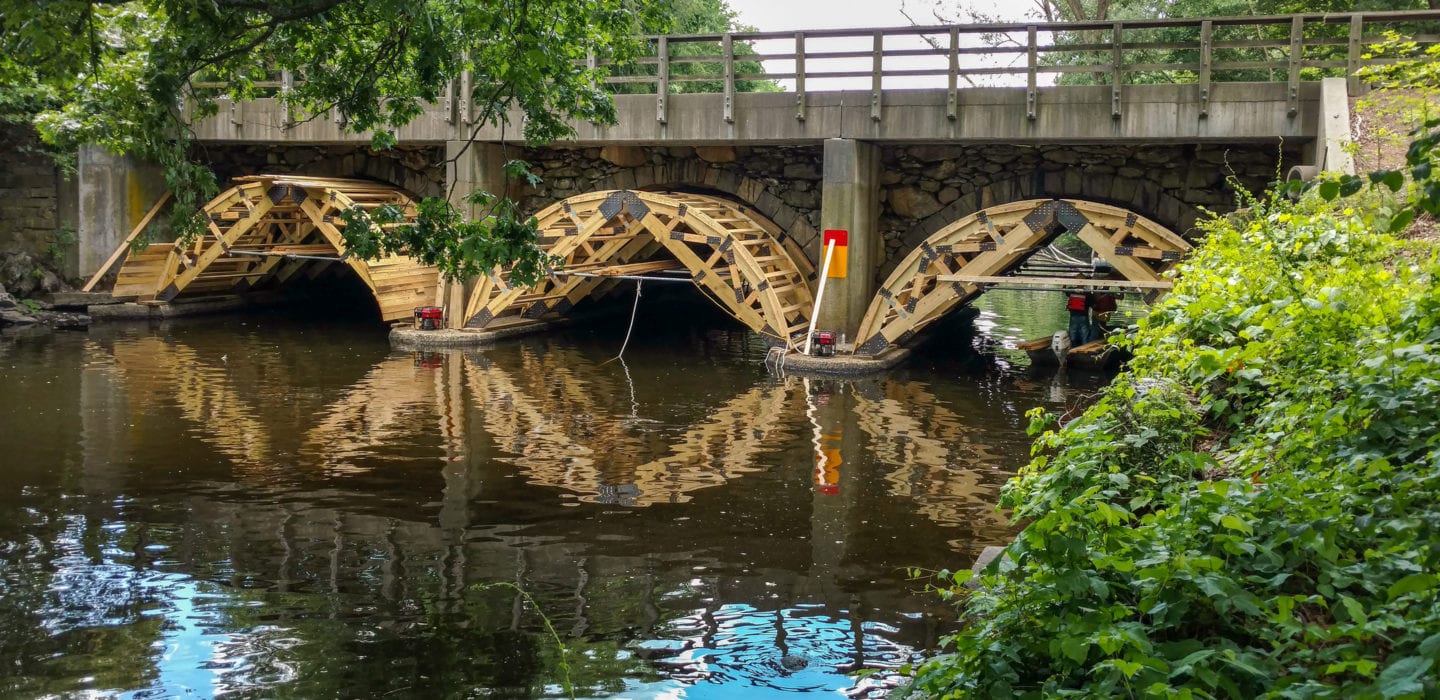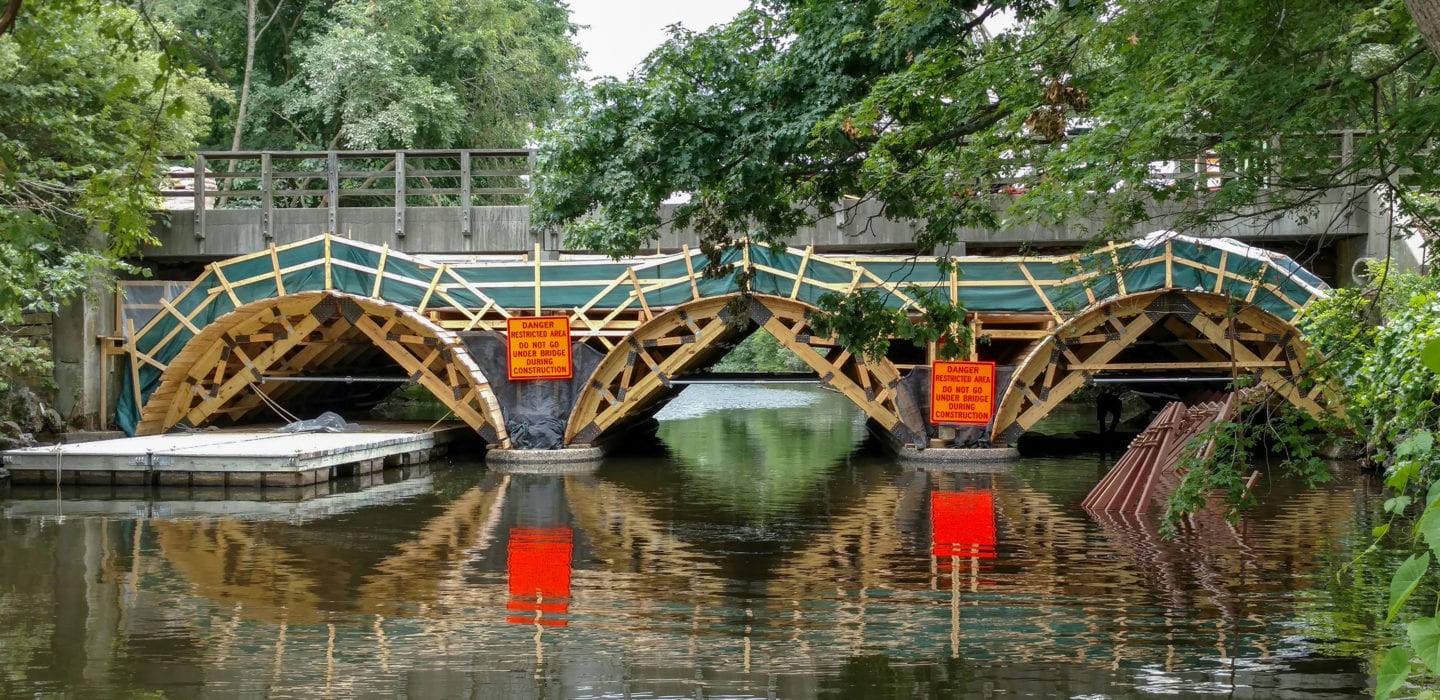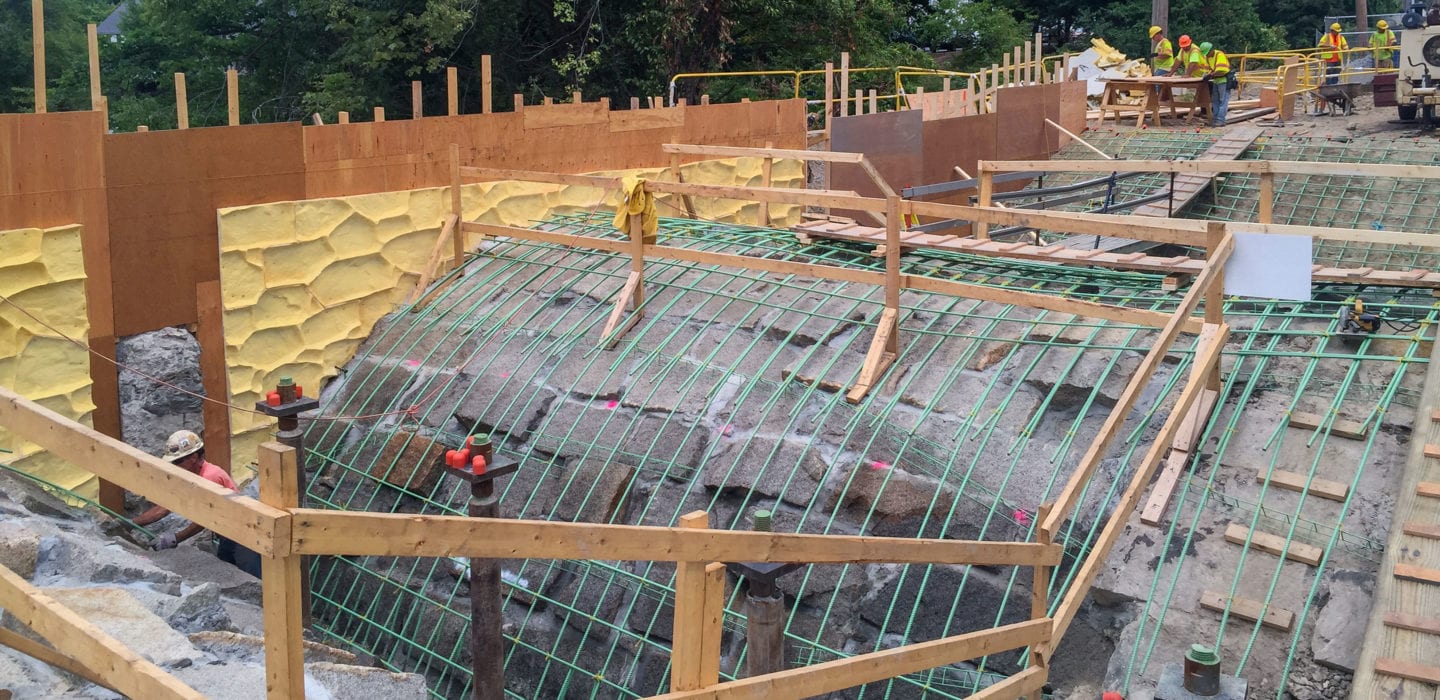Central Avenue / Elliot Street Bridge Rehabilitation
Needham / Newton, Massachusetts
The Town of Needham and the City of Newton jointly own the bridge carrying Central Avenue / Elliot Street over the Charles River, which serves as the border between the two municipalities. The bridge is a historic three-span stone masonry arch bridge constructed in 1857 and widened in 1897.
BETA performed an in-depth investigation and evaluation of the structure, which was experiencing movement of the arch barrel stones, and had received a reduced load rating by MassDOT. As part of the investigation, BETA installed gauges and monitored the bridge for movement for over two years.
The municipalities chose to rehabilitate the bridge by using a concrete arch saddle. This rehabilitation method replaces the soil gravel fill over the arches with reinforced concrete, essentially creating a new concrete arch bridge within the existing stonework. Major elements of the rehabilitation also included drilling concrete-filled micro piles through the piers and abutments to underpin them, stone masonry repairs, replacing an independent sidewalk superstructure that had been added to the north side of the bridge in 1970, and replacing the bridge railings to meet crash testing requirements. The north spandrel wall was replaced by forming that side of the arch saddle with a custom form liner that resembled the original stonework. After the form liner was removed, the concrete was hand-stained to match the appearance of the surrounding storms. This same liner and staining technique was used to add a veneer to the concrete piers that supported the abutting sidewalk bridge, helping to better blend the appearance of the two structures.
Additional elements of the project included approach roadway and sidewalk replacement, traffic management and detour plans, drainage structures, and piping, BMPs for stormwater, installation of facilities for undergrounding of the overhead utilities, and providing the infrastructure for future underground electrical distribution and high-voltage transmission lines.
The project included a significant level of public outreach and coordination with environmental and historical permitting agencies to shepherd this project through the design phase.

